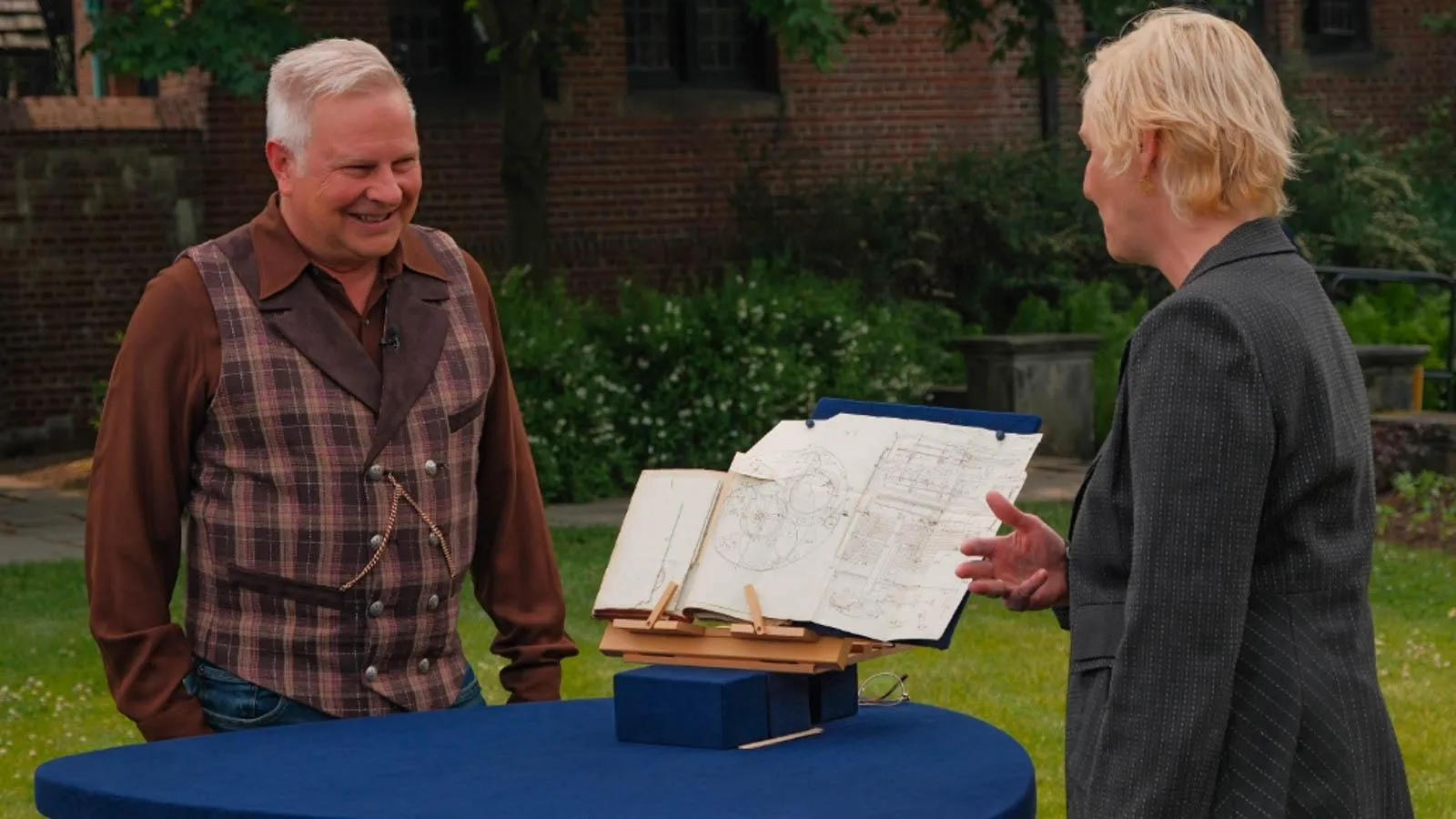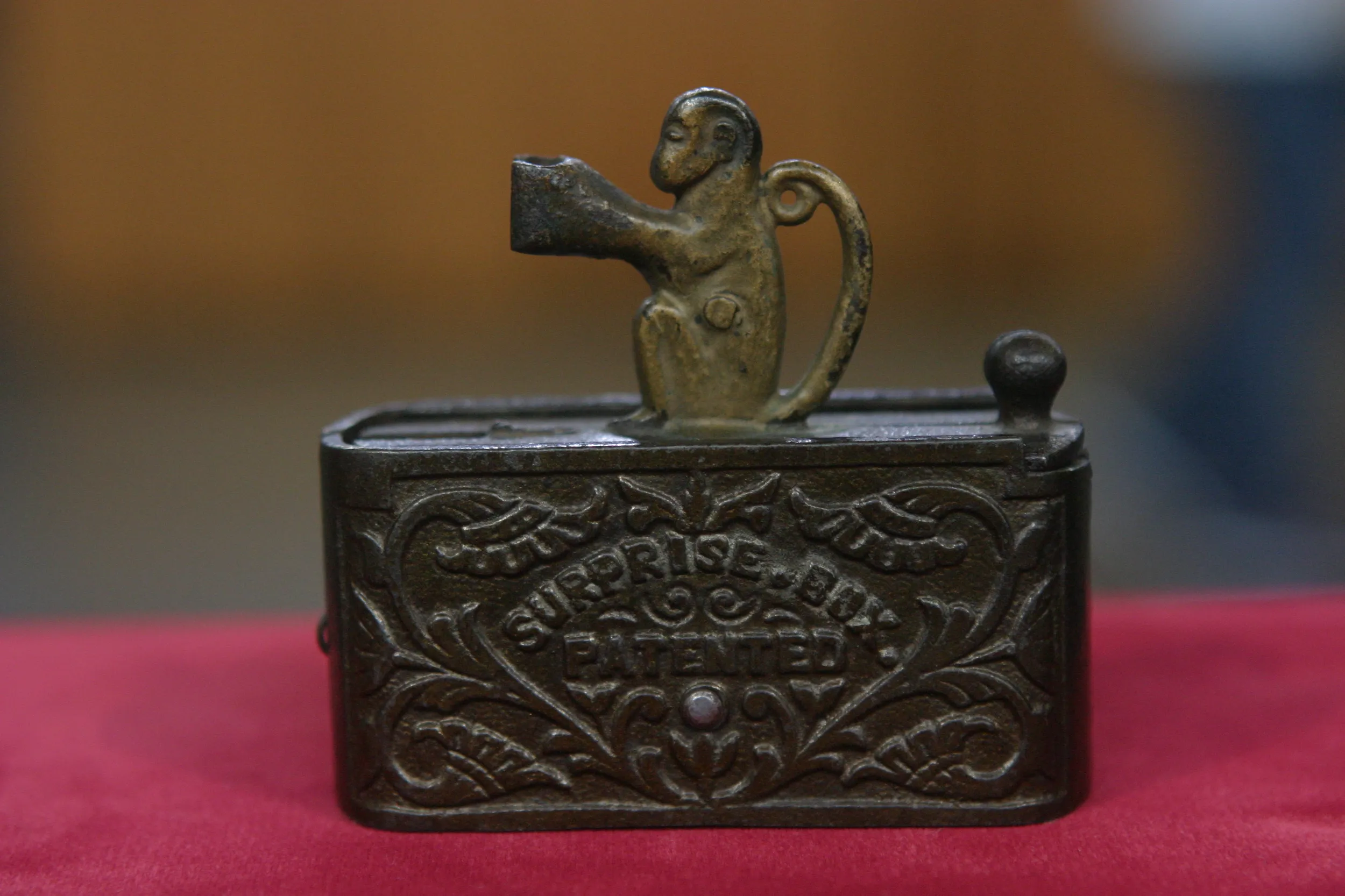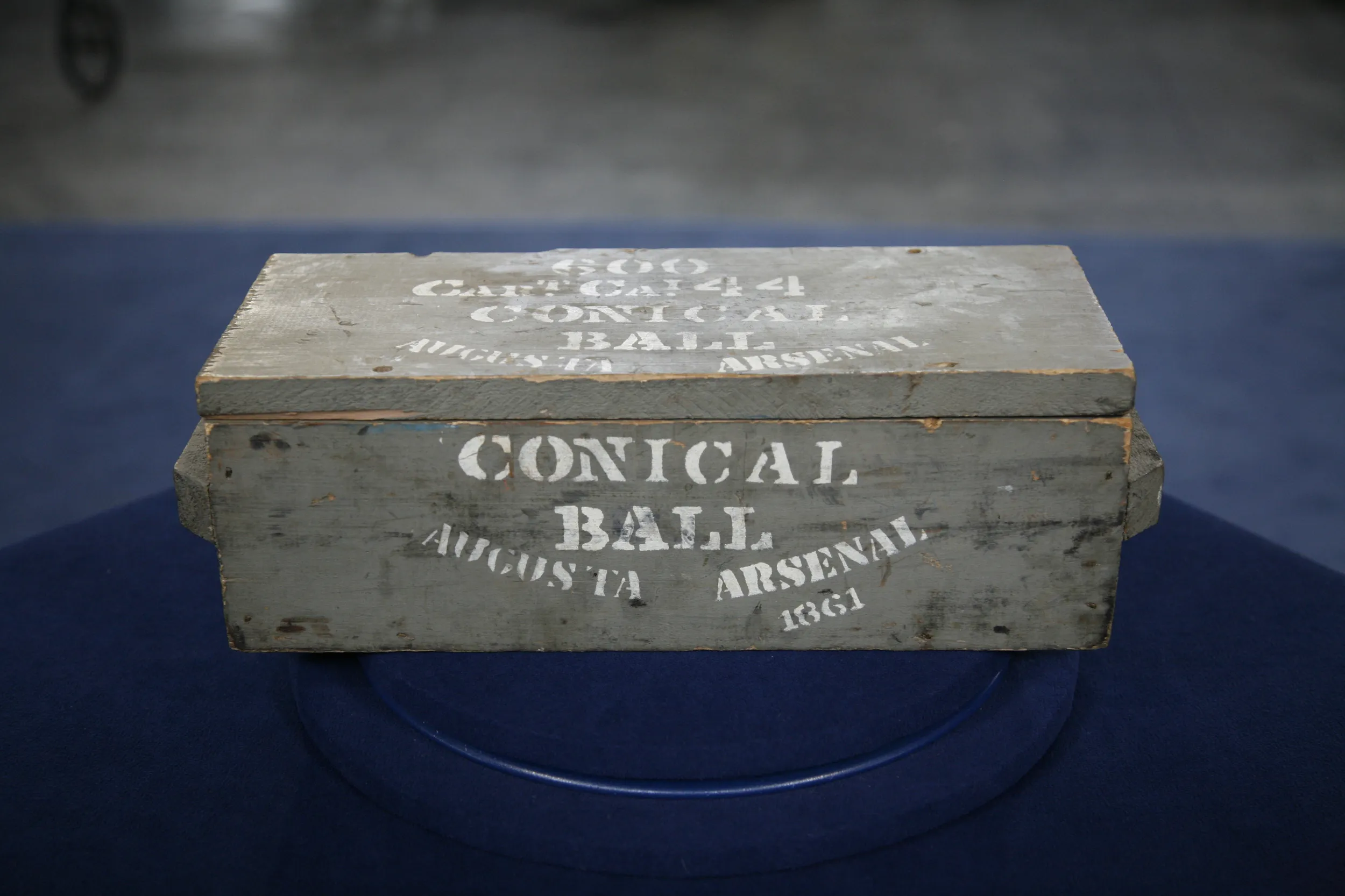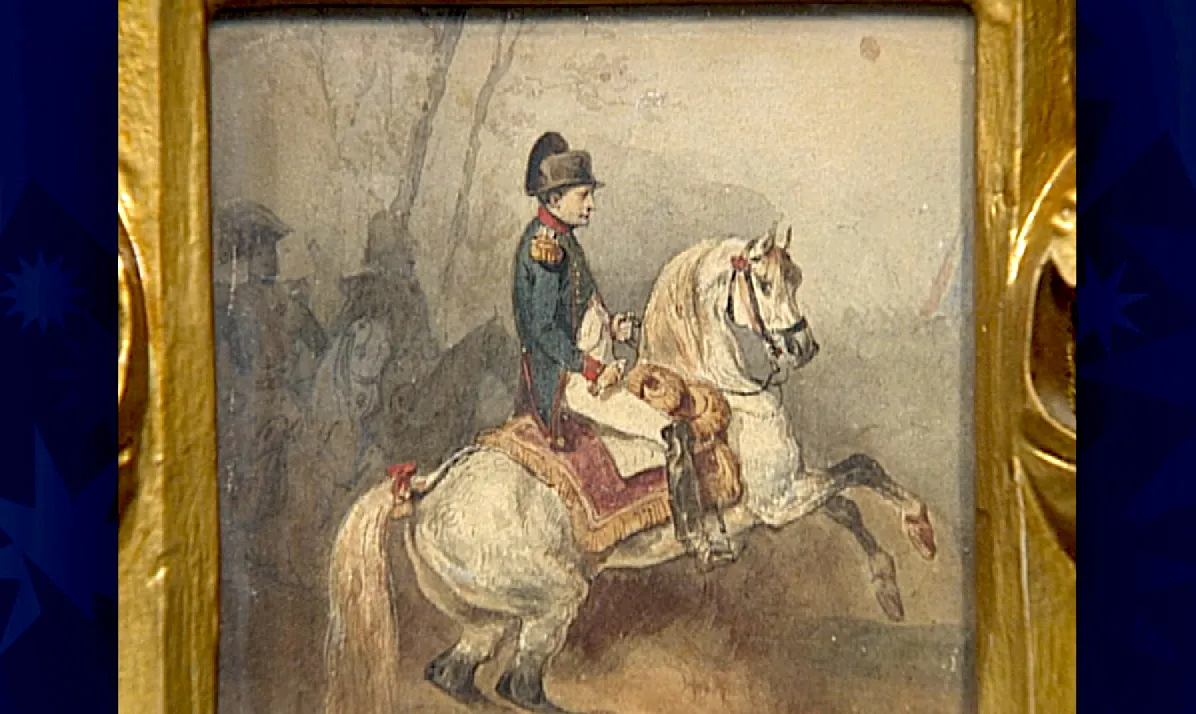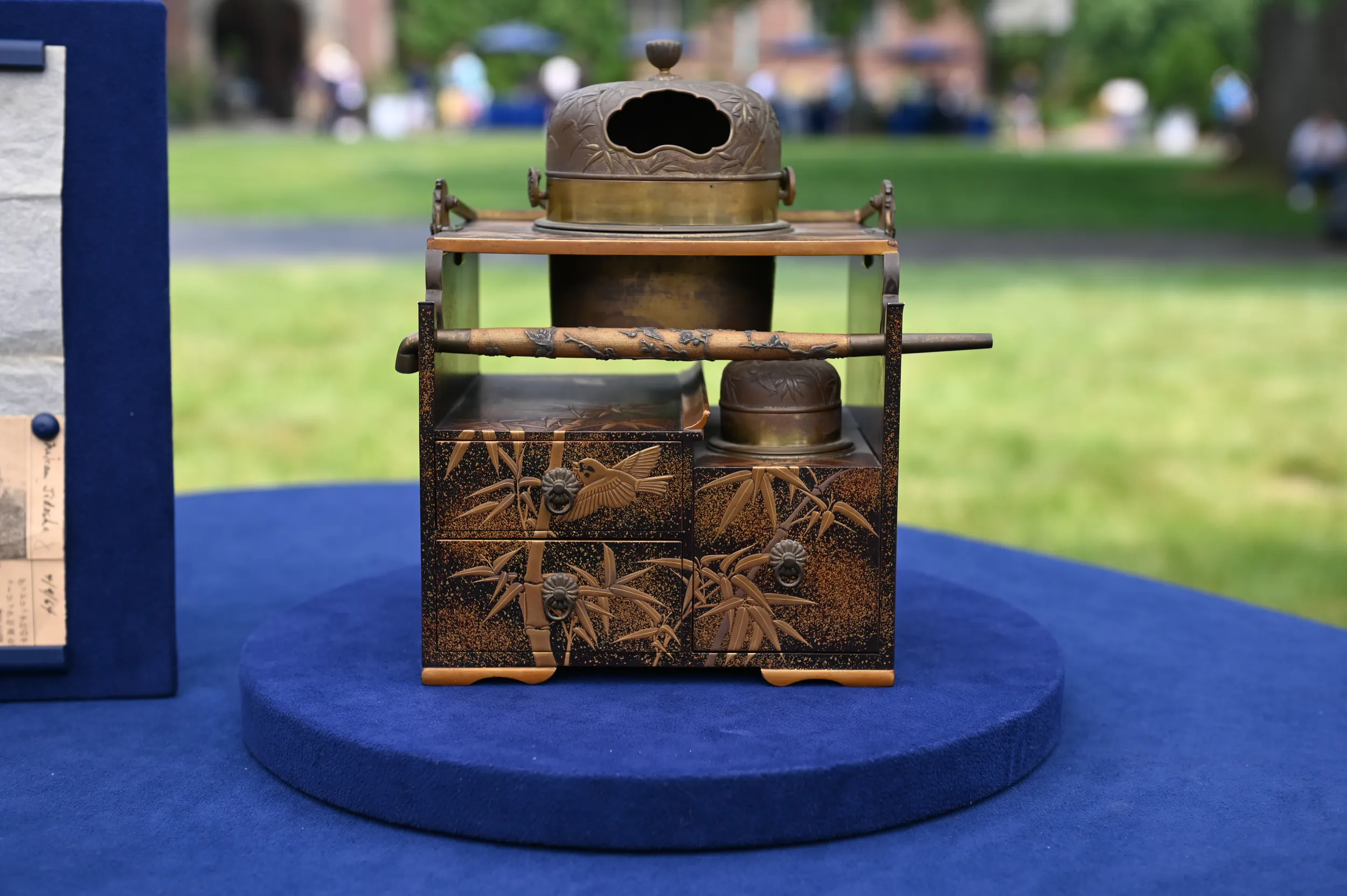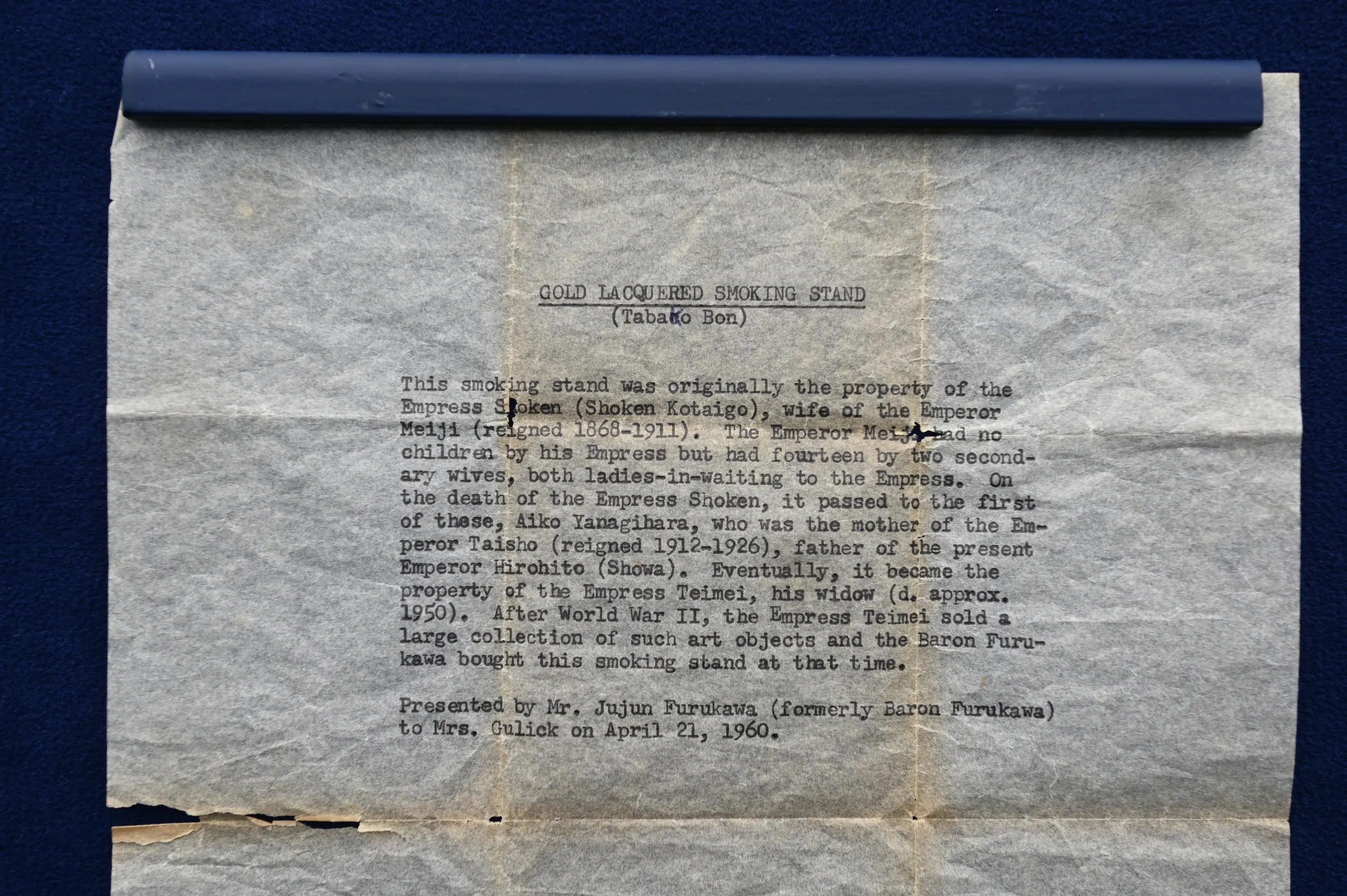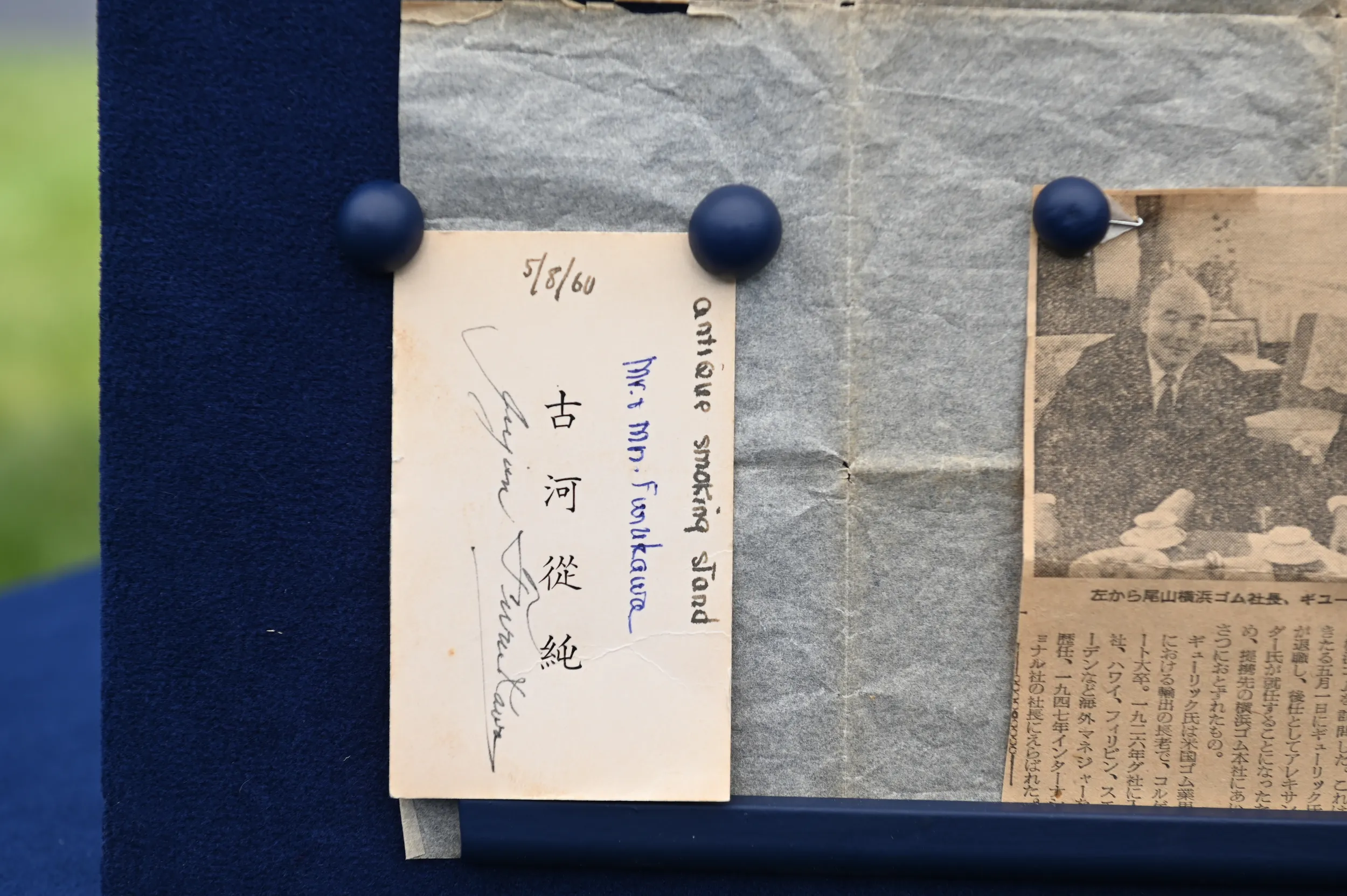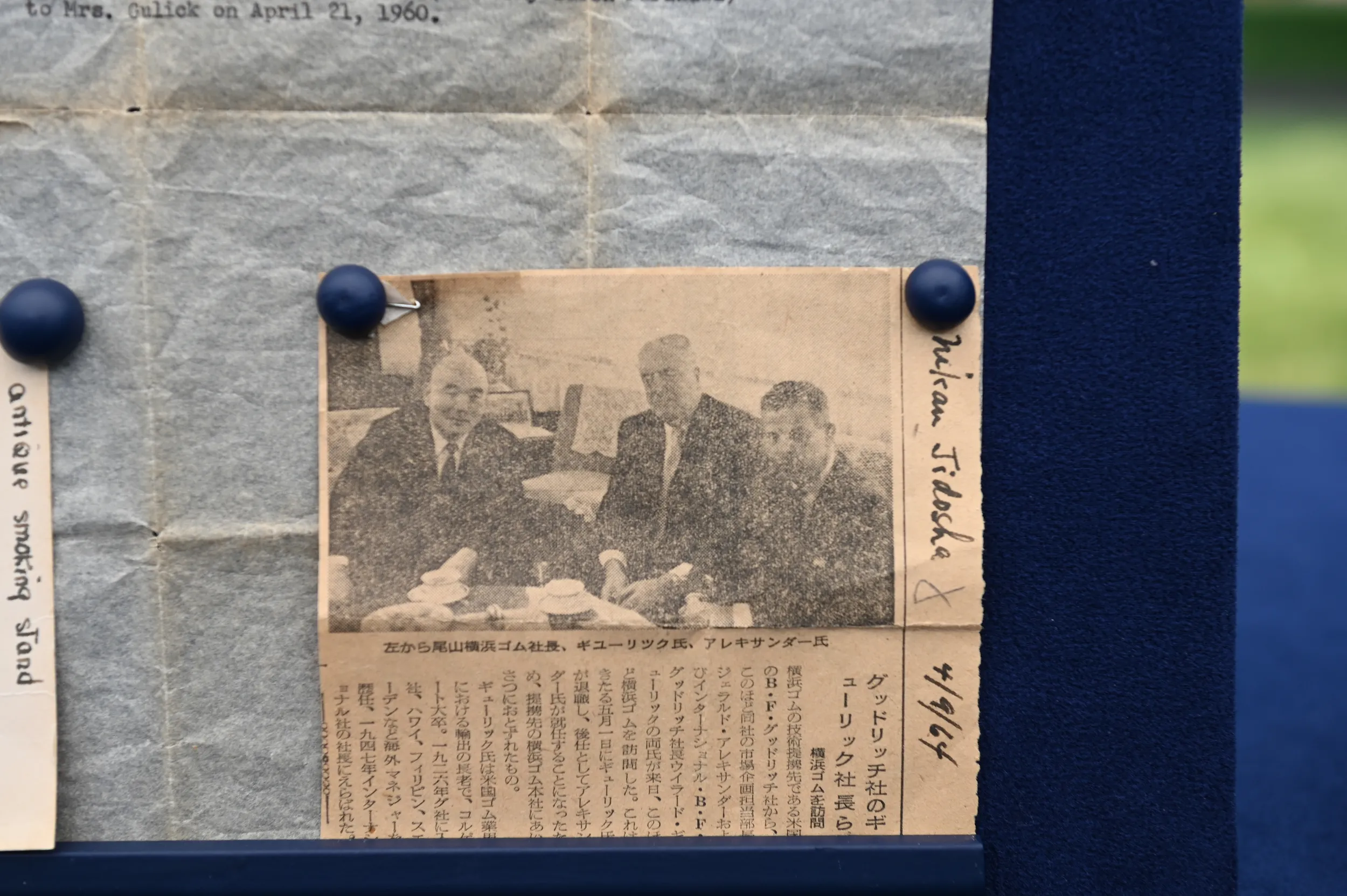GUEST: This is a tabako-bon...
APPRAISER: Mm-hmm.
GUEST: ...which has been in my family since 1960. It was a gift to my grandmother. She got it from Mr. And Mrs. Furukawa. Her husband was president of Goodrich, and Goodrich had a business partnership with Yokohama Tire. And I believe that it was given as sort of a diplomatic gesture in the, uh, in the business world.
APPRAISER: Mm-hmm.
GUEST: Yokohama Tire opened up to Western trade early in the 1900s.
APPRAISER: Mm-hmm.
GUEST: And I believe one of their first partners was with Goodrich Tire here in the U.S. And my grandfather started working for the company in the 1920s. So he had a lot of business relations with Japanese companies, and Yokohama Tire was one of them. I like to say my family is sort of a merging of, uh, rubber empires. Um, my father's family was connected to the Seiberling family. My mother's family, um, was connected to the Goodrich family. The tabako-bon… (laughing) …is from the Goodrich side. It came down my maternal side.
APPRAISER: So what you brought with you today is a beautiful Meiji period Japanese lacquer tabako-bon that uses copper, silvered copper, and gilt copper elements.
GUEST: Hm.
APPRAISER: The Meiji period was 1868 to 1912. Likely, this was produced right around 1900. A tabako-bon is a smoking box, and there are spaces for everything that you need if you were a tobacco smoker. You have drawers, you have your kisuki, your pipe. It's really just a single draw, is what you would have, maybe two. It's covered with these gorgeous little silver elements. Cranes with cherry blossoms. Cranes are auspicious animals. They're related to the imperial family, and cherry blossoms are indicative of new life.
GUEST: Mm.
APPRAISER: Which is ironic for a pipe.
GUEST: (laughs) Mm-hmm, mm-hmm.
APPRAISER: It's decorated throughout with bamboo and sparrows flying. Bamboo is an incredibly resilient plant, and it represents that strength-- a gentleman, a lady's strength to bend but not break...
GUEST: Mm-hmm.
APPRAISER: ...under pressure. There is some damage on the corners...
GUEST: Hm.
APPRAISER: ...where the handle comes down-- that shows that it was used. And not all of the elements want to function as fully as they should. It's
difficult to pull this guy out. (laughs) So we won't push.
GUEST: Yeah, I, I don't open the drawers very often.
APPRAISER: We won't push.
GUEST: Yeah.
APPRAISER: We know the history, because you happen to have these wonderful documents with you. There's a newspaper article, which I
translated, and the newspaper article does say that this was in fact a gift from Jujun Furukawa for a retirement.
GUEST: Oh, okay.
APPRAISER: And we can see on the business card his name, Jujun Furukawa, C.E.O. of Furukawa Company that owned Yokohama Tire. And then in the photo, we have Jujun with your grandfather. On your grandfather's left is Gerald Alexander, who had been the head of marketing for the Goodrich Tire Company and was being announced as your grandfather's replacement. This letter, where did this come from?
GUEST: It was always inside the, the drawer. So I assumed it was typed up by the person who presented it. It says it was the original property of
the Empress Shoken Kotaigo.
APPRAISER: And as you said, this was a gift not to your grandfather...
GUEST: But to my grandma, who...
APPRAISER: ...but to your grandmother.
GUEST: Yeah, which I thought was kind of neat, but as I read this story, I realized that it went through the maternal line in Japan, from empress to
empress, and I was touched by that, in that it went from her to me! (laughing) So, um, it touched me in a deep, emotional way. (laughing) In that, um, respect.
APPRAISER: Provenance is important. It dates it back to Empress Shoken, who was the Meiji emperor's chief consort. Now, that's a very difficult
thing to prove.
GUEST: Right. I understand. (laughs)
APPRAISER: Furukawa was a very powerful man in Japan.
GUEST: Mm-hmm.
APPRAISER: Uh, I found reference to him as a baron. It's possible that he was related to the imperial family, but I can't say for sure. Of course, it's a family heirloom, but what would you think it would sell for?
GUEST: My brother and I were debating. His guess was in the $5,000 to $10,000 range, and I said, "But it's got such a great provenance, I'm going to go higher." So that's kind of where we left our guess.
APPRAISER: It does have some damage, which you don't like on lacquer. In today's market, something like this would likely sell for around $3,000 to $5,000.
GUEST: Okay. Wo, oh, wonderful. (laughs)
APPRAISER: Let's say that we could prove that this was Empress Shoken's-- five, ten times in value.

